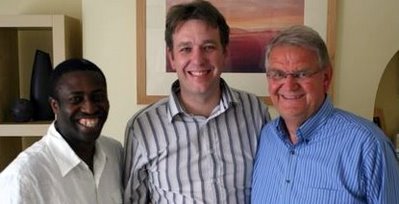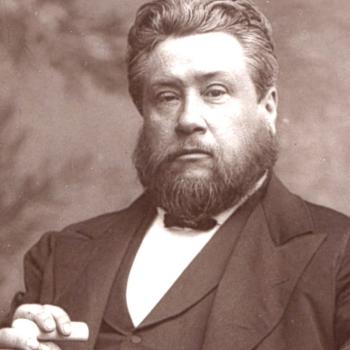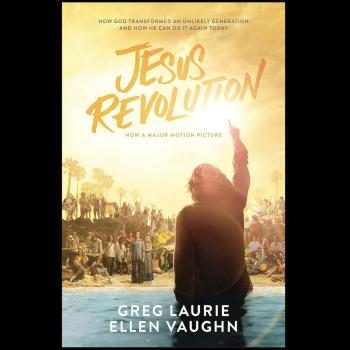 I am joined again today by Terry Virgo, leader of the reformed charismatic group, Newfrontiers.
I am joined again today by Terry Virgo, leader of the reformed charismatic group, Newfrontiers.
Yesterday I spoke with Terry about his ministry and his view of the wider evangelical scene. Today I would like to begin by taking him back to the early days of his Christian life.
Adrian
Terry, can you tell us who particularly inspired you when you were a new Christian?
Terry
My first pastor was a man called Ernest Rudman, who loved the Bible, was a real man of prayer and was committed to world missions. While the way he did church and did missions would be very different to the way I would do so later, I learned those three values that would stay dear to me for the rest of my life.
Then, in the 1960’s I was both baptized in the Spirit and also read my first Banner of Truth book—A. W. Pink’s Sovereignty of God—and hence became a charismatic Calvinist.
I longed for the Holy Spirit. I was looking for a more godly and effective experience. My pastor, Ernest Rudman, had experienced something more than the conventional following a crisis of faith which had led to something which he couldn’t articulate or explain very well. As a young pastor, he had a crisis and an experience with God over a few days—praying for hours about Romans 12:1-2. He said, ‘I gave my hands to God, my eyes to God,’—gave his body as a living sacrifice. Intriguingly, before that he had a tiny church, while after that experience, he had a big church— one of biggest Baptist churches in the country at the time.
I was longing for more, and aware of the inadequacy of my own experience of God, so I turned to two theological heroes of mine—Dr. Martyn Lloyd-Jones and John Stott. I studied both of them on the issue of being baptized in the Spirit and found that they totally disagreed with each other. I thought if these two heroes of mine can’t agree, what hope is there for me? So I was thoroughly confused.
Then out of sheer agony of longing for more, I went to a Pentecostal church with a friend and someone laid their hands on me. I felt the power of God go through me and spoke in tongues. That opened up a whole new world.
Adrian
What did you feel were the implications for you of this new experience?
Terry
During those days two distinct schools of thought developed. The first was the renewal school which emphasized the personal aspect of our experiences. We were told not to “mess with the church.” I immediately felt drawn to the alternative perspective—the restoration school.
I felt that what had happened to me was so radical that it had immediate implications for how we do church. If the Holy Spirit has come, we couldn’t do church the same way. It was like a string of dominoes, the fact that I now spoke in tongues, had the potential of the prophetic, and a far more intimate sense of God’s presence meant that we needed a new wineskin for this new wine. This meant that I was committed to the restoration perspective. This was simply a goal of recovering New Testament church life.
As we started new churches that had no history or tradition, we had to learn. How do you do church? Who leads it? We started by looking at elders. We asked the New Testament the following questions: Who appoints them? Who starts churches? This all became a journey which led us to a rediscovery of things like apostles. Although I respect men like Lloyd-Jones and Stott, I felt their appraisal of these things was wholly unsatisfactory.
Adrian
What then was the destination you arrived at in terms of the structure of church life?
Terry
Alec Motyer in his opening remarks in his commentary on Philippians eloquently describes the structure of the church as seen in the New Testament. Paul writes to the saints, the elders, their deacons, “We have a remarkably full summary of the constitution of the New Testament Church: the body of believers, the local church officers, the over-arching apostolic work of Paul, and the occasional ministry of a person like Timothy coming into the local situation from the outside.”
Scholars like Motyer describe it. We say, “Let’s do it!”
Motyer describes exactly what we aim to do in Newfrontiers. G. K. Chesterton once said, “The Christian ideal has not been tried and found wanting, it has been found difficult and left untried. As I said in Does the Future Have a Church, maybe this is true also of the biblical pattern of church life so simply described by Alec Motyer, but so manifestly ignored by most ecclesiastical systems in our day.
Adrian
What does that look like in practice?
Terry
When we first got started I had a very intimate relationship with all the Newfrontiers churches, most of which I personally helped get started. I would pay regular visits, praying for the people, teaching apostolic doctrine, modeling worship, and highlighting things like the grace of God, until it was obvious that the church was enjoying grace and the Holy Spirit. Now teams of men do that. Currently some churches within Newfrontiers are more intimately interwoven than others. My desire is that every church should feel that security of apostolic involvement intimately, and the enjoyment of being caught up with that apostolic figure and the team that is working with him. As we grow on as a movement we need to see multiplied apostles with their teams serving the churches.
In the end the ascended Jesus gives gifts to people—whether it be evangelist, pastor, teacher, prophet, or apostle. We are told to ask the Lord of the harvest to thrust out workers. We are asking God to give gifts to people. Although someone might go to Bible college or be trained in a certain way, in the end they have to be supernaturally empowered. Training can improve a person, but only God can give a gift. In summary, apostolic ministry today lays a foundation, and functions in a fatherly way—it is not only biblical exposition, but relational.
Adrian
Tomorrow we will talk more about just what this modern-day apostolic ministry looks like.
Continued in part 3 . . .












